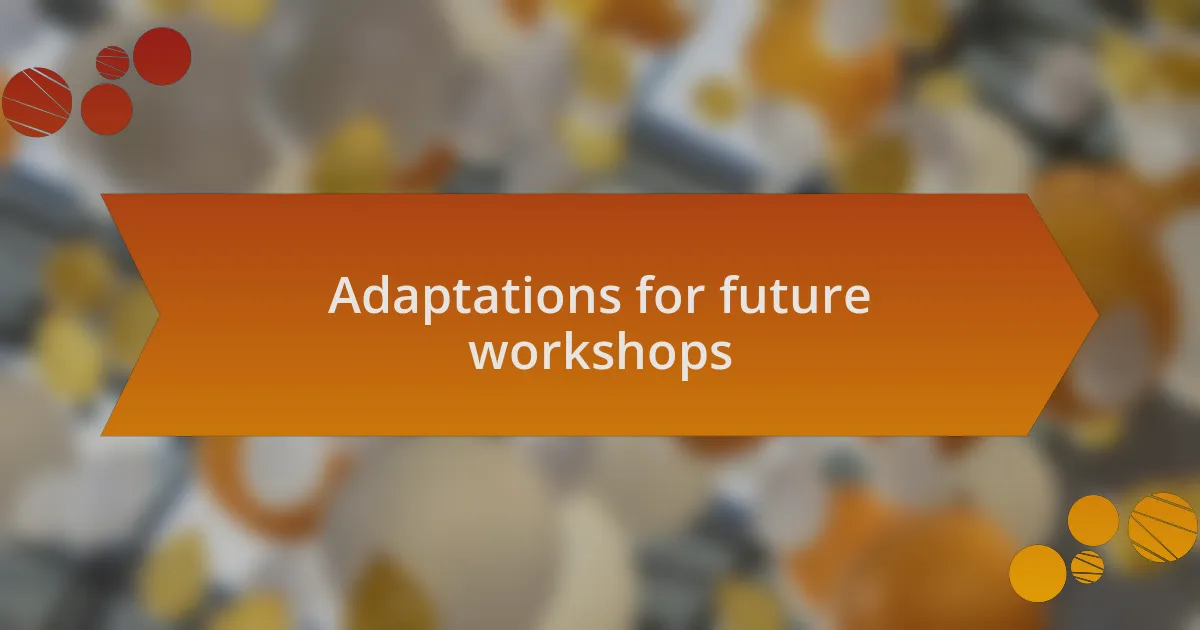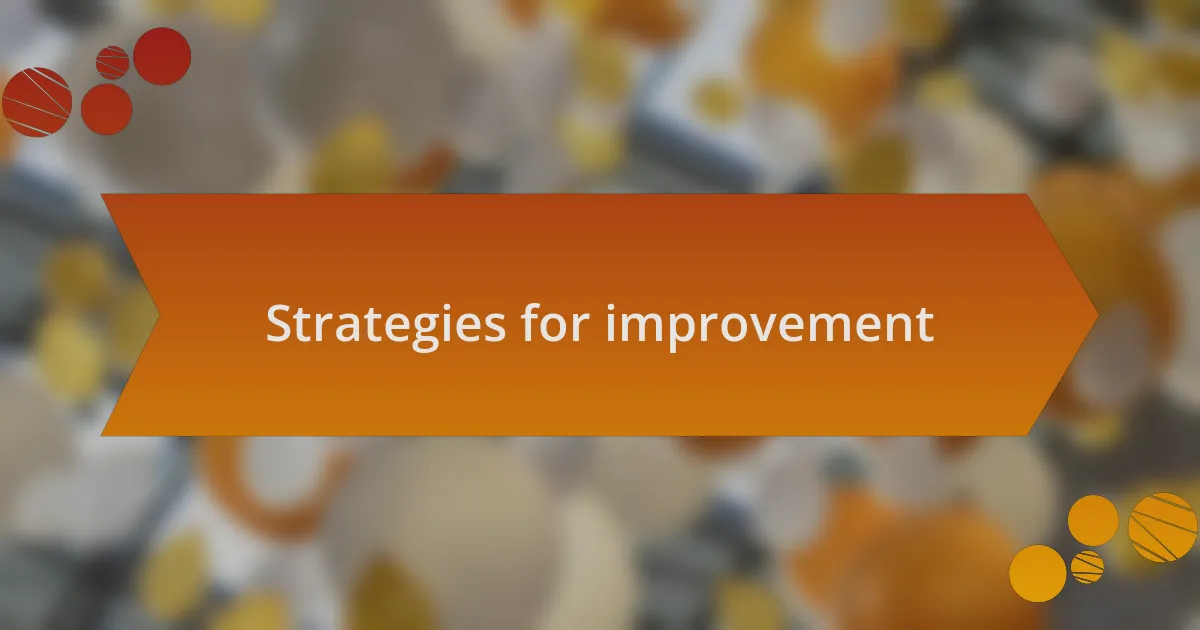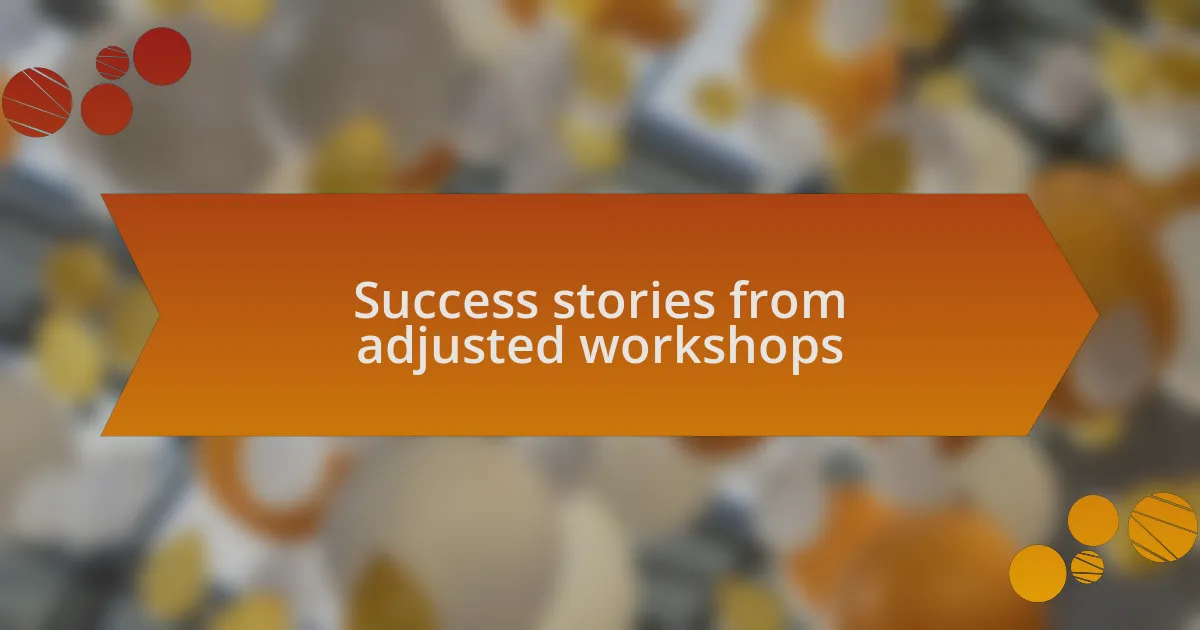Key takeaways:
- Failed workshops often stem from a disconnect between facilitator goals and participant needs, highlighting the importance of flexibility and responsiveness in design.
- Clear objectives and inclusive practices are critical for engagement; failing to foster inclusivity can lead to participant exclusion and disengagement.
- Incorporating interactive elements and seeking regular feedback can transform the workshop experience, encouraging active participation and richer discussions.
- Creating a safe space for diverse opinions and adapting to participants’ dynamics can lead to more engaging and memorable workshops.

Understanding failed workshops
Understanding failed workshops often starts with a closer examination of expectations versus reality. I remember a workshop I attended that promised to spark creativity but left attendees feeling uninspired. What happened? Sometimes, it’s the disconnect between the facilitator’s vision and the participants’ needs that leads to disillusionment.
I’ve found that failed workshops often reveal deeper insights into what truly resonates with people. For instance, I once participated in a group where the agenda was rigid, stifling open conversation. It made me wonder: are we too focused on structure at the expense of organic, meaningful dialogue? This experience highlighted for me the importance of flexibility and responsiveness in workshop design.
Also, consider the emotional landscape during a failed workshop. I experienced a palpable sense of frustration among participants when the promised interactivity fell flat. It’s crucial to recognize that workshops are not just about imparting knowledge; they’re about connecting on a human level. Reflecting on these moments can provide valuable lessons about engagement and the essential elements that make workshops truly successful.

Common reasons for failures
One common reason I’ve observed for workshop failures is a lack of clarity in objectives. I remember attending a session that seemed to drift aimlessly, leaving many of us confused about what we were supposed to take away. When goals aren’t clearly defined, it’s hard for participants to connect with the material, leading to disengagement.
Another significant factor is the facilitator’s approach to group dynamics. In a workshop I led myself, I noticed that ignoring quieter participants created a sense of exclusion. This taught me that fostering an inclusive environment is vital; if people don’t feel heard, they’re less likely to invest emotionally in the experience. Why would anyone participate fully if they feel overlooked?
Finally, logistical mishaps can severely impact the overall workshop experience. I recall a scenario where technical issues plagued a presentation, derailing the flow and leaving attendees impatient. It made me reflect on how crucial it is to prepare for the unexpected. When the rhythm of a workshop is disrupted, it can lead to collective frustration, ultimately overshadowing the valuable content being shared.

Lessons from past workshop designs
Reflecting on past workshop designs, one major lesson I’ve learned is the importance of tailoring content to the audience’s skill level. There was a workshop I attended where the facilitator presented complex concepts without considering the diversity in our backgrounds. Many participants looked lost, and I could feel the frustration in the air. This experience highlighted how crucial it is to assess the group’s capabilities beforehand; otherwise, valuable insights can get lost in translation.
I’ve also realized that the timing and pacing of a workshop can make or break its success. I once led a session where I packed in too much information within a short timeframe. The hurried pace left everyone scrambling to keep up, and it felt overwhelming rather than enlightening. Ultimately, a well-paced workshop allows participants to digest information and engage meaningfully; what good is knowledge if no one has the time to absorb it?
Lastly, I learned the hard way that feedback loops are essential during workshops. In a recent event, I skipped checking in with participants throughout the session, missing vital cues about their engagement levels. This oversight made me understand the power of real-time adjustments. If participants feel their voices are valued, they’re more likely to contribute actively—after all, how can we improve if we’re not open to hearing what others think?

Adaptations for future workshops
One significant adaptation for future workshops is incorporating interactive elements. I remember attending a workshop that included small group discussions and hands-on activities. These moments not only broke the monotony but also created an atmosphere where participants felt comfortable sharing their ideas. Isn’t it fascinating how a simple shift from passive listening to active engagement can transform the learning experience?
Another important change is to implement regular feedback sessions throughout the workshop. I’ve observed that when I pause to gather thoughts and reactions, the energy in the room shifts. Participants often express insights that lead to richer discussions. By giving them a voice, you foster a collaborative environment. So, why not make feedback a scheduled part of the agenda, rather than an afterthought?
Lastly, I find that flexibility in scheduling is crucial. During my last workshop, unforeseen circumstances caused us to run behind, and I had to make quick decisions about what to cut. That experience taught me that having a flexible schedule allows facilitators to adapt content based on the group’s dynamics. It’s a balancing act; how do you ensure the key points are covered while still honoring the group’s needs? This is something I’ll definitely prioritize in future workshops.

Personal reflections on failures
There was a time when I approached a workshop with high hopes, only to watch it unravel. I clearly remember the moment when the energy in the room shifted from excitement to awkward silence. It was a stark reminder that even well-prepared plans can fall flat if they don’t resonate with the audience. Reflecting on that failure, I learned that understanding the participants’ expectations is as crucial as the content being delivered.
Another experience that sticks with me is the workshop where I underestimated the time needed for each activity. As discussions dragged on, I felt a mix of anxiety and frustration; I had to cut content to stay on schedule. It taught me that a rigid structure can sometimes stifle creativity and organic conversation. Have you ever felt the pressure of time slipping away, knowing valuable insights might go unshared?
Then, there was the workshop where I didn’t adequately create space for diverse opinions. I remember a participant’s hesitant voice cutting through the silence, challenging the majority view. I realized then that failures often unravel the most important threads of collaboration and inclusivity. This experience drives home the lesson that fostering a welcoming environment for dissenting voices can transform a workshop from a lecture into a vibrant exchange of ideas.

Strategies for improvement
One effective strategy I’ve found for improvement is to spend time surveying participants beforehand. I recall a project where I sent out a simple questionnaire asking what topics they were most eager to explore. The responses completely reshaped my agenda and led to richer discussions. How often do we neglect the voices of those we aim to serve, only to miss out on transformative insights?
Another approach involves flexibility in planning. I once facilitated a session where discussions flowed so organically that I abandoned my outline to follow the participants’ lead. It felt risky but ultimately resulted in the most engaging and memorable workshop I’ve hosted. Isn’t it fascinating how letting go can sometimes lead to greater creativity and connection?
Lastly, creating a safe space for sharing diverse opinions cannot be overstated. During a particularly challenging workshop, I introduced a “silent brainstorming” session, allowing everyone to jot down their ideas anonymously. The shift in dynamic was palpable; voices that had once hesitated were now confident. How can we truly enrich our discussions if we don’t make everyone feel heard?

Success stories from adjusted workshops
While adjusting my workshop format, I once included a segment where participants collaborated on projects in small groups. It was brilliant to watch shy individuals blossom in that setting, as they shared ideas they’d hesitated to voice in larger groups. Have you ever seen how powerful it can be when people feel they have a safe space to voice their thoughts?
Another successful adjustment came when I incorporated visual aids and interactive elements. During one workshop, introducing a hands-on activity allowed attendees to engage with the material physically. It sparked their creativity and transformed the atmosphere into one of excitement and collaboration. Isn’t it incredible how a simple change can shift energy and enthusiasm in the room?
I also learned the importance of follow-up after sessions. For example, after a workshop that didn’t land as well as I’d hoped, I reached out to participants for feedback and offered additional resources. To my surprise, many expressed appreciation for the follow-up, turning what felt like a failure into a building block for future success. How often do we realize that sometimes, reaching out can rekindle interest and connection?